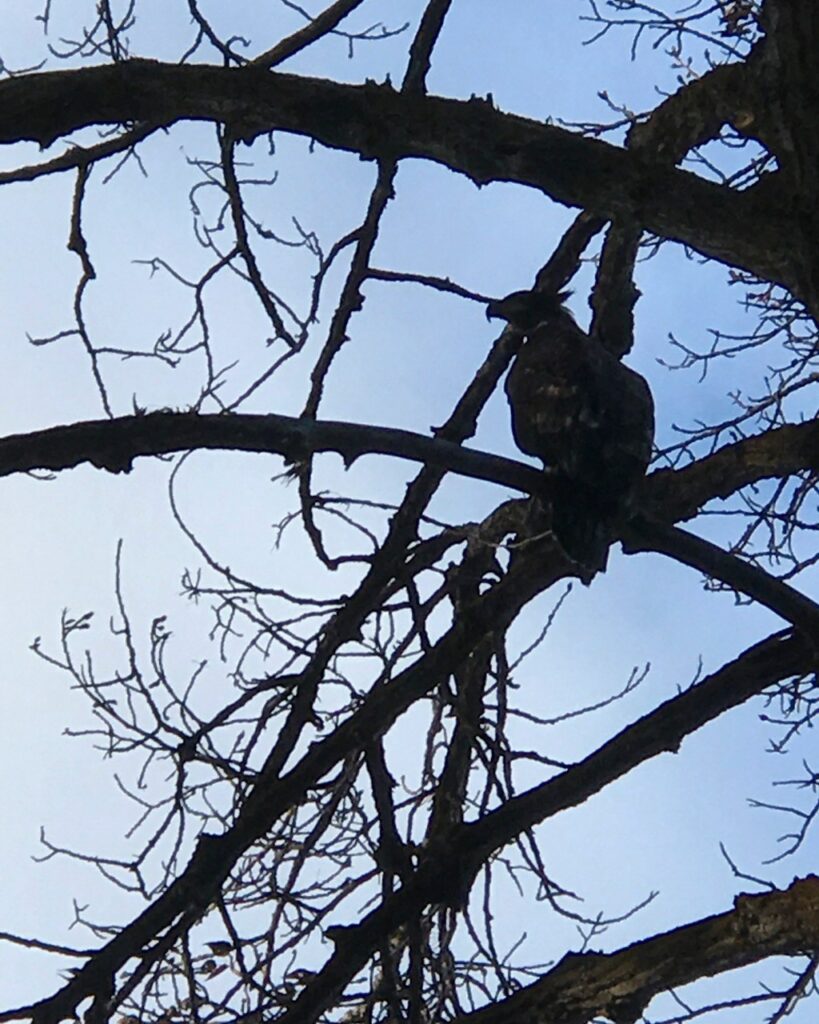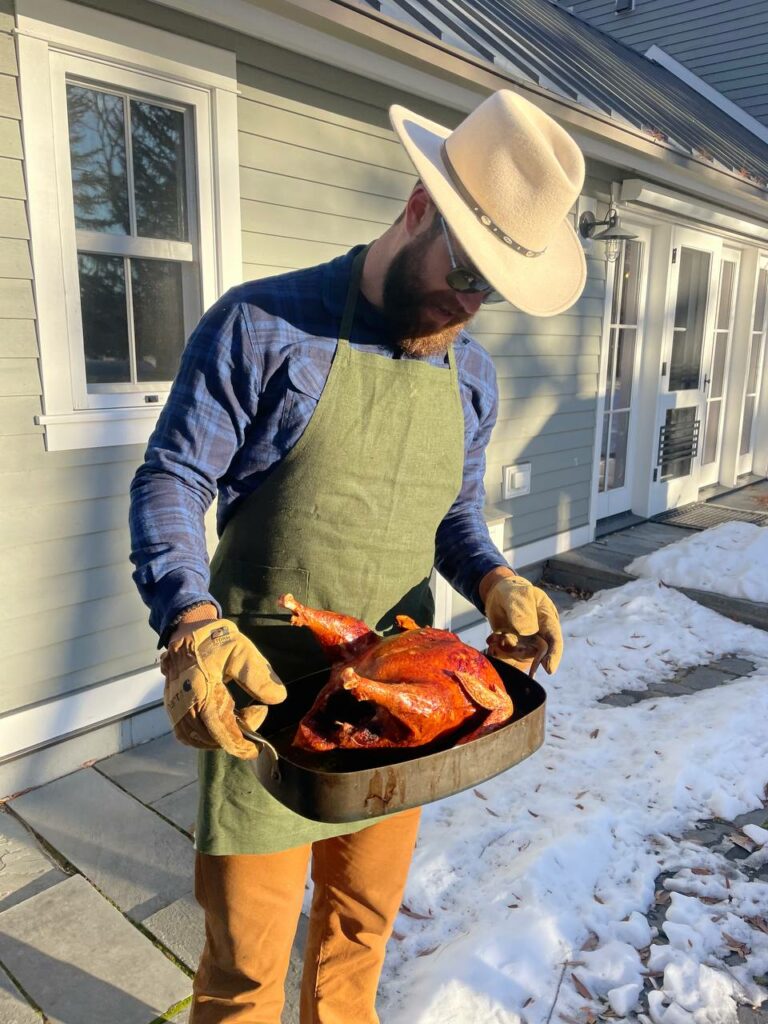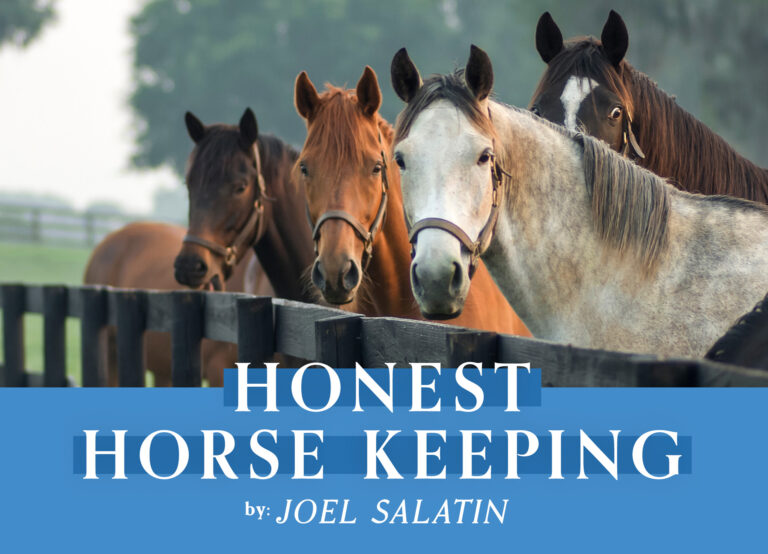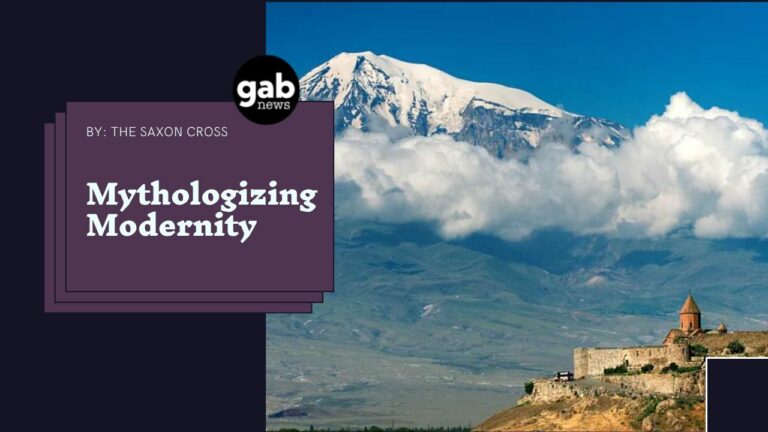The Living Scripture of Creation
Nature is under God’s control, and all the parts of nature are part of His symbolic language. This means that all of creation offers spiritual lessons. To farm, log, or fish is to interact with an animated parable of Christ, spoken by wordless creatures. A Christian culture needs this natural engagement, because if nobody stoops down and gets their hands dirty in the earth, then nobody can build cathedrals and gather together to pray heavenward.
Last summer, I was out feeding hogs in a pasture. I was enjoying the sunlight and the beauty of the land. But I was also undergoing a spiritual struggle.
I balanced a heavy sack of feed on my shoulder and trod carefully between the uneven clumps of grass. Then the hogs detected my presence and began to swarm around my feet. They shrieked like demons. They pummeled each other and my shins with thick snouts. Every few steps, one would scamper out in front of me as though it were deliberately trying to trip me up. They couldn’t wait for their food — they didn’t realize that the slower I had to walk, and the more I had to kick them out of my way, the later they would eat. “Idiots,” I thought. But a little voice in the back of my mind countered: “Haven’t you done the same, lacking patience, not understanding the plan of the One who feeds you?”
I bit back the profanity on my tongue until I finally reached the blackberry bush out in the pasture. I had been pouring feed on the base of that bush for a week so that the pigs would dig up its roots while they ate. So far they’d dug it halfway out. I poured out half the bag of feed there, then another half on another bush close by, and a third half on some pineapple weed that also needed to go. Then I watched the hogs eat.
This is what I saw: first, all the creatures converged on the first pile of feed that I had poured down. Then one hog realized that there was a second pile and trotted over to it. Immediately, all of the other hogs followed him to the second pile, forgetting the first. Then they did the same thing with the third pile. I watched as the brutes jostled and scrapped, always over the same pile. Of course, if they had dispersed evenly, each one could have eaten in peace.
The pigs were showing me something. Clearly, their struggle wasn’t just about food. Inside of the hog’s mind, the imperative was not just to eat, but to prevent their neighbor hog from eating.
Does that sound familiar?

It reminded me of my young siblings and me as kids, who only fought over a toy when we knew that one of the other siblings wanted it. It reminded me of how many of us adults act, as well.
Hogs are reputed to be the smartest farm animals; nobody ever said the wisest. They seem to have a zero-sum game theory encoded into their greedy instincts: the hog that eats more gets bigger, and then the bigger hogs get more food. So it’s just as important that their hog neighbors not get bigger, as it is that they do get bigger.
The hogs are a vivid symbol of the way not to love thy neighbor. Maybe that’s what the prodigal son realized, in the pigsty. God used the hogs to stimulate repentance. Maybe that’s also one reason why the Lord allowed the legion of demons to enter into the Gerasene hogs: to show us what he may allow the demons to do to us if we act like hogs. And once they’re in us, the demons will run us off a cliff into chaos.
But when hogs floated down on that sheet in St. Peter’s vision in the book of Acts, we were granted a great spiritual responsibility. Rather than shunning hogs, which are manifestly unclean, we were encouraged to interact with them. Now all things have become clean, because all things, when illuminated by the glorification of Christ, can point us toward a loving God. That includes the muddy hogs.
It’s a real shame that the vast majority of modern people won’t get this spiritual instruction because they’ve never seen a hog on a farm. Even modern industrial hog farmers won’t get this lesson, because they raise their stock in cement-floored warehouses, under fluorescent lights, often cutting off and cauterizing the pigtails so that the other inmates won’t bite them off. They treat hogs like cogs in a machine.
How many spiritual lessons from Scripture do we miss, if we lack experience with livestock, and indeed all of natural creation? Including eagles.
I’ve watched a lot of eagles, in my life. Bald eagles have a very instructive mating process. High in the sky, a pair of eagles will come together and interlock their talons, mid-flight. Then they free-fall together, in coitus. Their anatomy is designed such that, every time they copulate, they must risk their lives, together. Talk about a trust fall. This must be the world’s greatest couple’s therapy – and it’s free. But eagles also embody an even deeper mystery.
In Psalm 102 (Septuagint numbering), the Psalmist writes “thy youth shall be renewed as the eagle’s.” This verse always caught my ear, because I love eagles, but I had no idea what the verse meant. In what sense is an eagle’s youth renewed?
I turned to St. Augustine, who wrote an immense commentary on the Psalter. He relates the following insight, which reveals the detailed observations that King David and his peers made about eagles. Apparently, as an eagle ages, its upper beak (called a maxillary beak) grows continuously, hooking further and further down over the lower beak (the mandibular beak). At a certain point, the maxillary beak reaches down so far that it blocks the opening of the mouth, even if the eagle opens its bill as far as it can. Then the old eagle begins to starve. Its feathers lose their luster and fall out. Death threatens.
But then, “By a natural device,” St. Augustine writes:
“the eagle is said to dash and strike against a rock the upper lip of its beak… it breaketh off the weight of its old beak, which impeded its taking food.”
St. Augustine: Exposition on the Book of Psalms. Christian Classics Ethereal Library. Page 998

The opening in the eagle’s bill is restored, food can come in, again, and youth is (temporarily) renewed. Thus, St. Augustine says, a mortal creature illustrates immortality, by breaking off its beak on a rock – a symbol of Christ (Luke 20:18).
Following the finger of Scripture that shows us how to contemplate nature, we can see how the eagle, who flies closer to heaven than just about any other creature, is as wise as the hogs are unwise. It also shows us a larger truth: every animal has lessons for our souls.
The behaviors, patterns, and interrelationships that God has designed into nature offer potent spiritual wisdom. Paraphrasing St. John of Damascus, the Patristic scholar Dr. Jean-Claude Larchet writes:
“Nature helps man by revealing to him the beauty, wisdom, and omnipotence of God, and allows him… to praise God and to raise toward Him in contemplation.”
The Spiritual Roots of the Ecological Crisis, page 7
Of course, these natural patterns are easy to misinterpret. Leviticus 19 prohibits us from seeking omens. Don’t count birds, when you want to found a city. Don’t read into the entrails of sacrificial animals. And of course, don’t make any decisions or analyses of your life based on “spirit animals” or other pagan totems. Most importantly, don’t deify nature by worshiping animal-headed gods or crafting superstitions about how “Coyote howled the world into existence” or other such silliness (Who brought coyote into existence?).
But the risk of these mistakes shouldn’t be a reason to turn away from nature, as a teacher. Proverbs 25:2 says, “It is the glory of God to conceal a thing, but the honor of kings is to search out a matter.” And we read in 1 Kings 4:33 that King Solomon applied this in his own life by learning the secrets within natural creation: “And he spake of trees, from the cedar tree that is in Lebanon even unto the Hyssop that springeth out of a wall: he spake also of beasts, and of fowl, and of creeping things, and of fishes.”
Nature is under God’s control, and all the parts of nature are part of his symbolic language. To farm, log, fish, or to undertake any natural research, is to interact with an animated parable of Christ, spoken by wordless creatures.
The snake shedding its skin as it grows, the caterpillar dissolving completely in its cocoon before rebirth as a butterfly, the starlings swooping together in aerial communion — they are all parts of God’s natural curriculum. This is confirmed by Christ’s own words, interpreted by St. Nicholas Velimirovich:
“Theology means the word of God, so theology is all or nothing… Each field and every flower are theology… The history of radioactivity and the history of each butterfly are theology… Consider the lilies of the field: if they tell you nothing of God, then neither would the great riches and wisdom of Solomon speak to you of Him.”
Larchet, The Spiritual Roots of the Ecological Crisis, page 31
Like the parables that Jesus spoke, the truths of nature can only be understood to the degree that your heart seeks the face of God. If a person’s heart is piggish, he will misinterpret creation and will abuse the kingly and priestly power that God gave to mankind, over the rest of creation.
This power, according to St. Maximos the Confessor, is the very purpose of the creation of mankind:
“Adam’s God-given power to name the creatures is the ability to define them according to the logoi (plural of logos) on which their existence is founded, so as to see God within them and offer them back to God.”
Larchet, p.33
Thus our understanding of nature and our use of nature are spiritually connected in a type of eucharist: a thanksgiving, a communion, with the ultimate purpose of bridging the existential divide between creation and Creator.
There are many smaller purposes and twists, nested within this ultimate purpose. I wasn’t raising hogs solely for the sake of spiritual lessons. And when the hogs grow enough, of course, they are killed. Since the fall, mankind’s brow has been not only sweaty but also bloody and muddy. But still, under all of that mess, there is a golden thread: the hogs feed people very well. And in their context, they revitalized neglected land, which will lead to more thriving creatures. Healthier land and more human lives mean more opportunities for more souls to follow God. If nobody stoops down and gets their hands dirty in the earth, then human cultures can’t build cathedrals and gather together to pray heavenward.
And if we who seek to follow God’s will don’t produce food, then we will be fed by people who serve an altogether different purpose – a purpose that kills. God commanded us to work the land. However, as Dr. Larchet argues, “It is quite out of the question that the aim of this [work] should be consumption or commercial gain.” (ibid p.11) Prosperity should be treated as an ancillary benefit, a sub-purpose that naturally accompanies successful agriculture. But wealth has been an idol for aeons, treated as the ultimate purpose of all life. This has never been more true, all over the world, than it is today.
Take industrial hog production, as described above. Most factory farms are torturous, crowded nightmares: hellscapes of human contrivance. They embody a relation to nature exactly the opposite of that which God intended for us to live by. In these “farms,” our piggish purposes occlude any lessons that the hogs naturally offer us. Our spiritual eyes are gunked up with manure, until we can’t recognize the Spirit anywhere, including in ourselves.
And yet, we can learn from these factory farms. We can compare them to natural, ancestral ways of raising hogs, and we can trace the cultural values that give rise to these methods of livestock management. By examining modern livestock husbandry, we can see our modern spiritual and political circumstances with greater clarity – the animals still teach us.
After all, livestock husbandry is intimately connected with power. There are deep reasons why many of the greatest leaders, such as Moses and King David, were shepherds. And these are reasons we must understand because we must become shepherds – and sheep – ourselves.

David Treebeard is a man of letters, a barefoot gardener, and a crossbow deer hunter. When not writing for Gab News, he is feeding various animal species or rendering animal fat into immortal Pemmican with his company, Steadfast Provisions.





